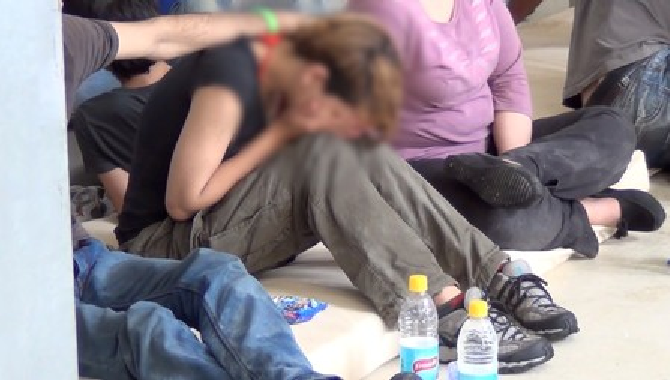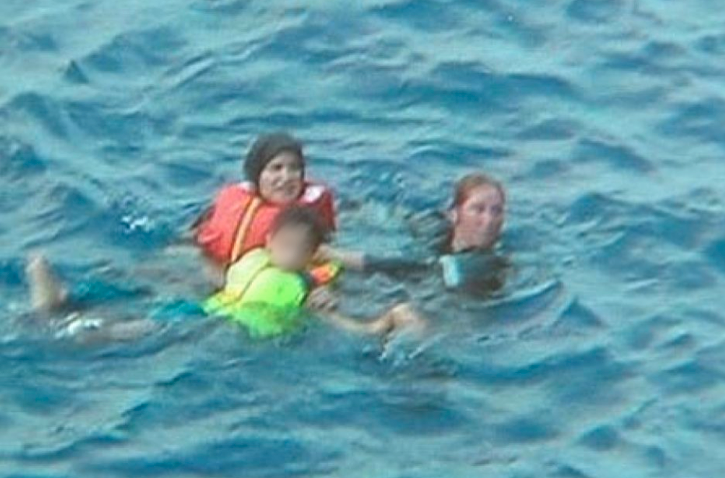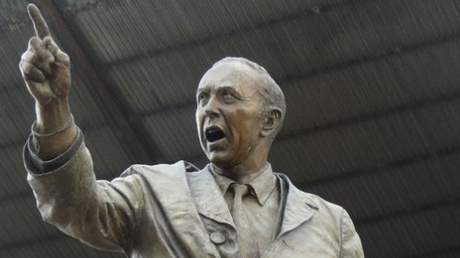
On 22 July 2013, Australia's Department of Immigration and Citizenship (DIAC) posted on its website a photograph of a young woman sitting on the floor, her head buried in her hands. The caption said: “A female asylum-seeker comes to terms with the fact that she won’t be settled in Australia.”
Taken together, the photograph and caption were pregnant with political significance. Only three days before, the Prime Minister, Kevin Rudd, had announced that all people who arrived by boat would be processed in Papua New Guinea and that genuine asylum-seekers would be settled there, not in Australia.
It was an escalation in what Chris Uhlmann of the ABC’s 7.30 program was to call the “arms race” of political rhetoric over asylum-seekers.
It was an official photograph taken for propaganda purposes
On an objective analysis, the photo is simply of a woman sitting with her head in her hands. A man’s arm is across the back of her neck, resting lightly on it, not embracing it. The woman’s face has been blurred to mask her identity. In itself the photograph is unremarkable. It is the caption that gives it power.
It found its way swiftly into the Australian media as was clearly intended by the Department, since it was posted on its website’s “newsroom”. This newsroom promises, among other things, “download-ready broadcast quality video, audio, photographs and features”.
The media outlets that picked it up generally showed suitable scepticism about its provenance, noting that it was supplied by the Department and that there had been no way of independently verifying it. The lessons of “children overboard” in 2001 had clearly not been forgotten.
That piece of rank political dishonesty also occurred in the context of an election campaign. In it, the then Defence Minister, Peter Reith, hawked around the media a photograph of asylum-seekers in the water near a partially abandoned boat. He claimed that it showed asylum-seekers had thrown children overboard in an attempt to force the Navy to rescue them all.

Mr Reith was challenged on air by the ABC’s Virginia Trioli, who said that the photograph only showed people in the water; it did not show children being thrown overboard. Mr Reith responded with bluster about the integrity of the Navy, but it became clear subsequently that his office had been told by the Navy that the photograph was not what he said it was.
Independently verifying the latest photo has so far proved impossible. In preparation for this article, the Immigration Department’s media office was asked eleven questions directed at establishing the bona fides of the photograph and at whether the woman’s consent had been obtained for taking and disseminating it. The department’s spokesman, Mr Sandi Logan, provided this response:
The image to which you refer is a still-frame of video footage taken by a DIAC officer as part of his official duties. The footage (also uploaded to the department’s online newsroom) was taken on July 20 some time after the first group of unauthorised maritime arrivals affected by the July 19 policy changes had been told of the new arrangements.
All appropriate steps were taken to ensure the people in frame were not identifiable (i.e. the photo was blurred). The department routinely posts similar vision on its newsroom to assist the media and to safeguard against outlets that do not observe the requested convention of the non-identification of asylum seekers.
The department routinely posts similar vision on its newsroom to ... safeguard against outlets that do not observe the requested convention of the non-identification of asylum seekers
We acknowledge these images may be confronting to some people, but it is imperative we multiply the message as far and wide possible about this new arrangement with PNG to stop people dying at sea. In the decision to make this material publicly available, we have done nothing more or less than what we require from the media when they tour our facilities. We have taken all steps to ensure the identities of the people in the images are protected and their privacy maintained.
This material is targeted towards potential irregular immigrants and people smugglers offshore and, indeed, this material has been used by international media that broadcasts to source and transit countries such as Iran, Afghanistan, Sri Lanka and Iraq. We are also seeking to raise awareness in Australia among key diaspora communities, as well as among their friends, their neighbours, their workmates and their trusted, credible sources of information (including such people as teachers, doctors, religious leaders etc). Finally, this image is legitimate; if ever the department were to post a re-enactment or a 'staged' photograph, it would be labelled as such.
This response states clearly that it was an official photograph taken for propaganda purposes. That doesn’t make it all bad of course: the Government has claimed that its policy is intended, among other things, to break the people-smuggling racket and save lives at sea. To the extent it achieves those ends, the propaganda may be said to have a just cause.
However, the tenor of the political argument – Uhlmann’s “arms race” – makes it obvious that the main game here is vote-getting for the impending federal election. Within days, the Opposition Leader, Mr Abbott, announced a militaristic stiffening of the Government’s policy. Seen in this context, it is clear that the photograph was also naked political propaganda.
Accepting Mr Logan’s word that the Department would not issue a set-up photo without labelling it as such does not alter the fact that a photo which serves the purposes of political propaganda has not been independently verified. It is this that creates the difficulty for the media. Given the history, it would be irresponsible to take material like this from the Department at face value, however much they might accept the integrity of an individual officer such as Mr Logan.
Independent verification means what it says: verification independent of the source. In the digital age all sorts of material is circulated purporting to be one thing when turns out to be another. In publishing it, the minimum the media can do is say it is unverified.
In this case, the media were confronted by a further question: whether to give oxygen to material that was at once political propaganda but also intended as a deterrent to criminal activity, a matter of substantial public interest. These are not easy decisions. In the circumstances they took an ethically defensible course: published, but with caveats concerning truthfulness.
The Department’s “newsroom” is illustrative of another phenomenon: the growth of “news” services in big corporations, government departments and big sporting bodies like the AFL. These are very well resourced, able to produce high quality ready-to-publish content that they can dangle it in front of news media outlets whose real newsrooms are being stripped out by the digital revolution.
This raises yet another big ethical question, that of editorial independence. Material supplied by a corporation, government department or other interested source cannot, by definition, be independent. But if the material looks like news, and the media don’t have the resources to get it or check it themselves, they are in the position of what economists call price-takers.
In the context of the led-up to the federal election, these related considerations of verification, propaganda and editorial independence are deserving of continuous scrutiny. As George Orwell wrote in Nineteen Eighty-Four: “In the end, the Party would announce that two and two made five, and you would have to believe it.”




